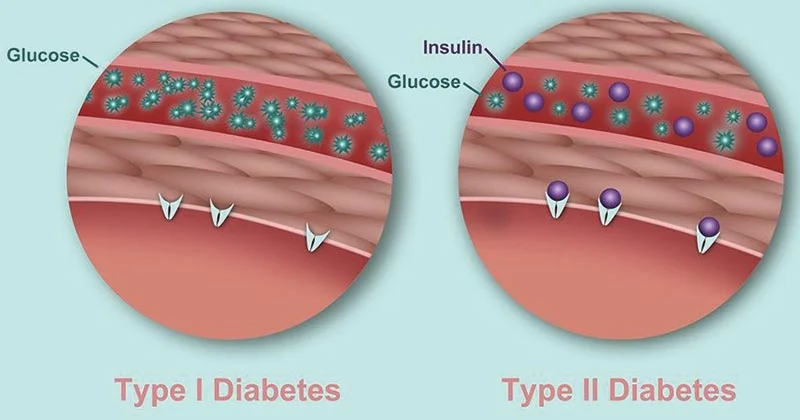Let’s face it—diabetes can feel overwhelming. The needles, the diet changes, the doctor visits—it’s a lot. But understanding what’s actually going on in your body is the first step toward managing it with confidence.
Whether you or a loved one has been diagnosed with Type 1 or Type 2 diabetes, or you’re just looking to learn more, let’s break it down in plain language.
What Is Diabetes, Anyway?
At its core, diabetes is a condition that affects how your body uses blood sugar (glucose). Glucose is your body’s main source of energy, and insulin—a hormone made by your pancreas—helps move it from your blood into your cells.
With diabetes, that system doesn’t work properly. Either your body doesn’t make enough insulin, can’t use it effectively, or both. That leads to too much sugar staying in your bloodstream, which can cause serious health problems over time.

Type 1 vs. Type 2 Diabetes: What’s the Difference?
🔹 Type 1 Diabetes
Type 1 is an autoimmune condition. Your immune system attacks the insulin-producing cells in your pancreas by mistake. That means your body stops making insulin altogether.
- Usually diagnosed in children or young adults, but can happen at any age.
- Requires daily insulin injections or a pump.
- Not caused by diet or lifestyle—this one’s genetic and autoimmune.
Living Tip: Carb counting, blood sugar monitoring, and a consistent routine are key to managing Type 1 diabetes effectively.
🔹 Type 2 Diabetes
Type 2 is more common and usually develops later in life, though it’s increasingly seen in younger people. In this case, your body still makes insulin, but doesn’t use it well (insulin resistance).
- Strongly linked to diet, inactivity, obesity, and family history.
- Can often be managed with lifestyle changes, oral medication, or insulin if needed.
- May go unnoticed for years due to mild or no early symptoms.
Living Tip: Regular exercise, balanced meals, weight management, and routine checkups can significantly improve blood sugar control.
Symptoms of Diabetes to Watch For:
- Frequent urination
- Excessive thirst
- Fatigue
- Blurred vision
- Unexplained weight loss (especially in Type 1)
- Tingling or numbness in hands and feet (more common in Type 2)
If you or someone you know is experiencing these, it’s worth seeing a healthcare provider for a simple blood sugar test.
Why Blood Sugar Control Matters
Unchecked diabetes can damage the heart, kidneys, eyes, nerves, and more. But with the right care, many complications are preventable.
🩺 Management goals include:
- Keeping blood sugar levels in a healthy range
- Monitoring A1C levels
- Eating well and staying active
- Taking medications or insulin as prescribed
- Getting regular check-ups
Can Diabetes Be Prevented or Reversed?
- Type 1 cannot be prevented, but research is ongoing.
- Type 2 can often be prevented or delayed with a healthy lifestyle.
- In some people, Type 2 can be put into remission through sustained lifestyle changes, weight loss, and proper care.
Final Thoughts:
Whether it’s Type 1 or Type 2, diabetes isn’t the end of your story—it’s just a new chapter. With the right knowledge, support, and habits, people with diabetes live long, active, and fulfilling lives every day.
If you’ve recently been diagnosed, don’t panic. Take it one step at a time. Learn about your body, work with your doctor, and lean on your support system.
You’ve got this.




